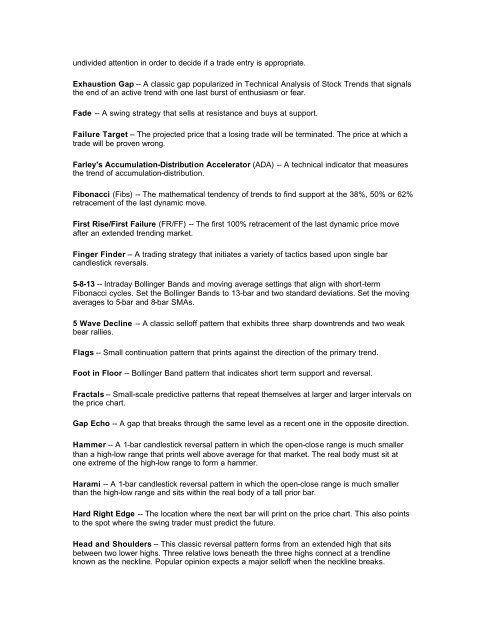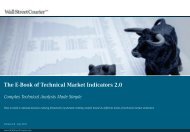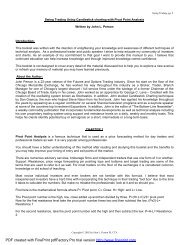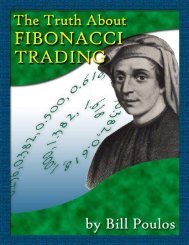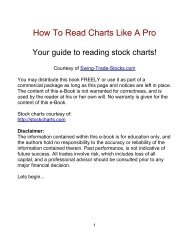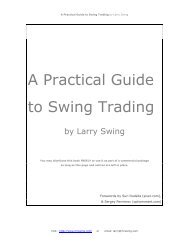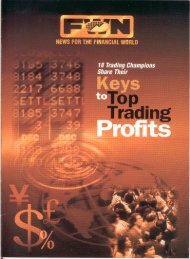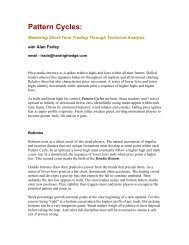3 swing trading examples, with charts - The Swing Trading Guide
3 swing trading examples, with charts - The Swing Trading Guide
3 swing trading examples, with charts - The Swing Trading Guide
Create successful ePaper yourself
Turn your PDF publications into a flip-book with our unique Google optimized e-Paper software.
undivided attention in order to decide if a trade entry is appropriate.Exhaustion Gap -- A classic gap popularized in Technical Analysis of Stock Trends that signalsthe end of an active trend <strong>with</strong> one last burst of enthusiasm or fear.Fade -- A <strong>swing</strong> strategy that sells at resistance and buys at support.Failure Target -- <strong>The</strong> projected price that a losing trade will be terminated. <strong>The</strong> price at which atrade will be proven wrong.Farley's Accumulation-Distribution Accelerator (ADA) -- A technical indicator that measuresthe trend of accumulation-distribution.Fibonacci (Fibs) -- <strong>The</strong> mathematical tendency of trends to find support at the 38%, 50% or 62%retracement of the last dynamic move.First Rise/First Failure (FR/FF) -- <strong>The</strong> first 100% retracement of the last dynamic price moveafter an extended trending market.Finger Finder -- A <strong>trading</strong> strategy that initiates a variety of tactics based upon single barcandlestick reversals.5-8-13 -- Intraday Bollinger Bands and moving average settings that align <strong>with</strong> short-termFibonacci cycles. Set the Bollinger Bands to 13-bar and two standard deviations. Set the movingaverages to 5-bar and 8-bar SMAs.5 Wave Decline -- A classic selloff pattern that exhibits three sharp downtrends and two weakbear rallies.Flags -- Small continuation pattern that prints against the direction of the primary trend.Foot in Floor -- Bollinger Band pattern that indicates short term support and reversal.Fractals -- Small-scale predictive patterns that repeat themselves at larger and larger intervals onthe price chart.Gap Echo -- A gap that breaks through the same level as a recent one in the opposite direction.Hammer -- A 1-bar candlestick reversal pattern in which the open-close range is much smallerthan a high-low range that prints well above average for that market. <strong>The</strong> real body must sit atone extreme of the high-low range to form a hammer.Harami -- A 1-bar candlestick reversal pattern in which the open-close range is much smallerthan the high-low range and sits <strong>with</strong>in the real body of a tall prior bar.Hard Right Edge -- <strong>The</strong> location where the next bar will print on the price chart. This also pointsto the spot where the <strong>swing</strong> trader must predict the future.Head and Shoulders -- This classic reversal pattern forms from an extended high that sitsbetween two lower highs. Three relative lows beneath the three highs connect at a trendlineknown as the neckline. Popular opinion expects a major selloff when the neckline breaks.


